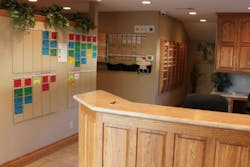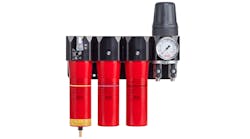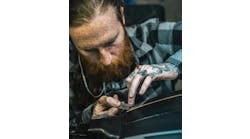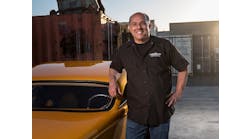THE INSPIRATION: “Are we running a business that has a low cycle time or are we running a parking lot?” asks Greg Lobsiger, owner of Loren’s Body Shop, when describing the inspiration behind his scheduling board. According to Lobsiger, many shops end up taking in more cars than they can handle and then just moving them around the lot until they can make time for the job. Lobsiger did not want to be one of those shops. The in-on-Monday and out-on-Friday mentality of many collision shops wasn’t going to work for Loren’s Body Shop, so Lobsiger decided to change the way he did things—beginning with the way he scheduled.
Something that really bothers (and continues to bother) Lobsiger is idle inventory. The way he looks at it, with a consistent input and output, shops should be bringing in and putting out the same amount of cars in a day. Thirty-seven percent of his business is scheduled for tow-ins and supplements, so he wanted to create a system that would account for that while scheduling current jobs in the most efficient way possible. With a well-run schedule, the shop would be able to bring in more jobs and avoid the hectic runaround that has most shops scrambling to finish on Friday.
WHAT IT DOES: Lobsiger’s scheduling board is a visual way of letting the staff know what’s going on inside the shop. “I can look over at the board right away and know where there’s an opening,” he says. Lobsiger calls the board a “heijunka board.” The word “heijunka” is a Japanese word that means “leveling.” When implemented correctly, heijunka helps meet demand while reducing waste in production, which is exactly what it does for Loren’s Body Shop.
When a car comes in, it is assigned a color-coded card. The color of the card is based on the amount of time that the job is expected to take: blue (0–9.9 hours), green (10–29.9), yellow (30–49.9) and red (50 and above). The card is then filled out with the necessary information such as name, RO number, in date, out date and whether or not the customer will need a rental. The card is then taken over to the scheduling board. The board is broken up into six columns that represent where a job stands: Repair Confirmation, Waiting Parts, Parts Ready, Body, Paint, and Build. The card is placed in the appropriate column and then moves through as the job progresses. Lobsiger and the staff are now able to look up and see exactly where a vehicle is in the process and what jobs they have the capacity to take on next. Lobsiger even has green magnets from Enterprise that he uses on the vehicles that need rentals as another visual reminder.
HOW IT’S MADE: Lobsiger picked up some boards at Lowe’s to create a base for the scheduling system. He used Microsoft Excel to print out the cards on colored card stock, and then laminated the cards so they are able to be written on with dry-erase markers. Striping tape was used to create the columns, and each of the six sections were labeled.
THE COST: All of the materials for the board can be purchased for under $75. The template for the cards can be made and customized to an individual shop’s needs (the one Lobsiger uses is available for download here. The entire board can be assembled in the amount of time it takes to put together the materials, which shouldn’t take more than a few hours.
THE ROI: It’s hard to track the exact ROI of the heijunka board but since Lobsiger started using this system in May of 2013, his revenue has gone from $1.2 million to $1.6 million. The heijunka board alone is not to thank for the increase in sales, but Lobsiger says it has definitely played a part.



